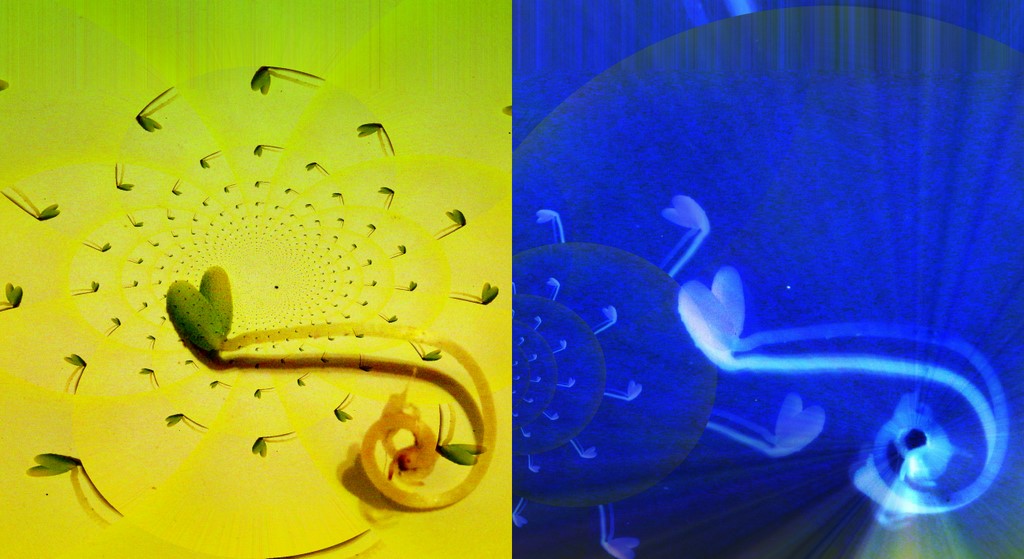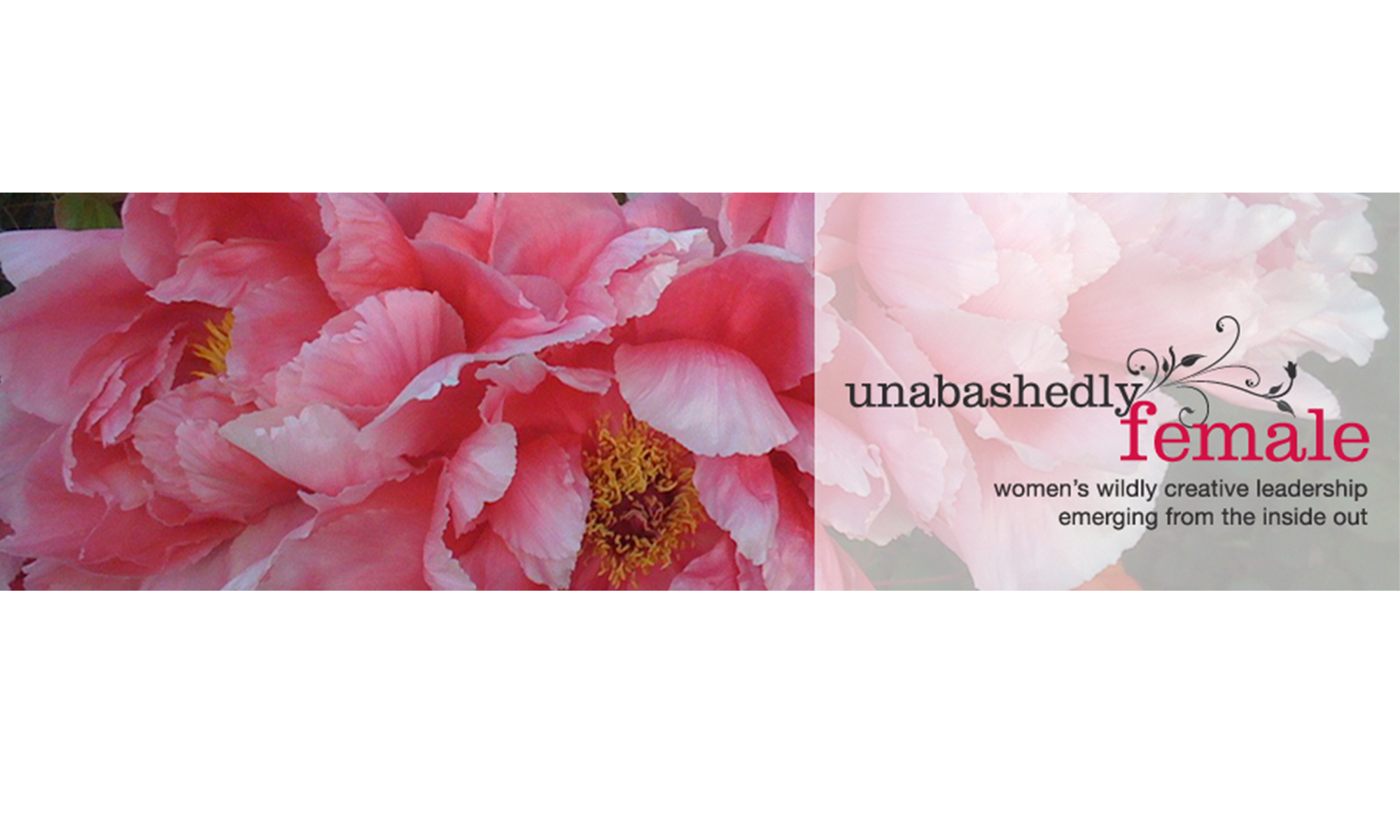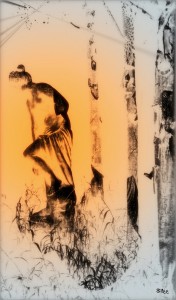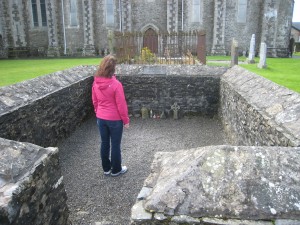
Sandilee Hart is an artist. Her Brighid’s Dawn graces my last post, Fire and Soil, where she shared this comment:
And in another very synchronistic moment–
This morning, as I was quickly getting ready to launch out the door & a busy day, I was still thinking of your posts, the birth of seeds, Brighid’s realm, the new moon…. I was giving a quick wipe of the sink-drain, and out came a little seed- sprout with a green heart leaf and a spiral end-root. I could not have been more surprised & delighted to see symbols that are special to me. Their very presence switched everything into waking dream mode.
Even though I knew the origin of the sprout had to be from rinsing out the cockatiel’s water dish with a stray seed there, it was still a marvel to me of symbolism and impeccable timing. Sometimes, things like this just put me in the most wonderful alignment and help me tune in & pay attention. Sure enough, the day was full of remarkable symbols-messages, spirit nourishment, laughter, and loving connectedness with others.
This morning,
a man I loved and admired passed away. Emmett Murphy was 89. He lived a long, long life. He had been a POW in WWII. I can feel myself not wanting to let go.
Imminent death and precious new life have been on my mind since Sunday. Upheaval. Seeds. What is dying. What is being born? What is birthing?
Tuesday,
February 1st, was St. Brigid’s day. Another lovely reader, Kelly, posted a comment in Fire and Soil:
My mom always used to say that St Brigid was the seed-planter – the saint we all needed to rely on for rebirth, hope, and warmth.
I didn’t know, until Kelly shared it, that St. Brigid was the seed-planter. The more I researched St. Brigid, the more synchronicity I’ve discovered.
Brigid the Weaver
According to Mary Condren on IrishTimes.com, Brigid was also known as Brigid the Weaver:
Before mass media and travel, and great political rallies, societies were held together by fragile threads, and weaving tools signified a key responsibility: that of weaving the precious webs of life and tending the bonds of community.
She goes on to say:
Like community activists and nurturers, Brigit wove the fragile threads of life into webs of community. She invented a shriek alarm for vulnerable women travelling alone, she secured women’s property rights when Sencha, the judge, threatened to abolish them and she freed a slave-trafficked woman. Above all, her bountiful nature (23 out of 32 stories in one of her Lives concern generosity) ensured that the neart (life force) was kept moving for the benefit of all and was not stagnated by greed.
Neart
Brigid’s “bountiful nature … ensured that the neart was kept moving for the benefit of all and not stagnated by greed”.
This morning, when I saw Sandilee’s heart seedling, I could see that new life is always sprouting, just as death is always coming.
The neart is always moving, especially when not stagnated by greed, by holding tightly to that which is not ours to hold. Brigit’s generosity is a symbol of the flow of life.
One of the most difficult lessons for me in this life has been to let go of what I wanted to hang on to. Over and over in life, we are all asked to let go of those things we don’t want to let go of. Even when they go, I’ve found I am still hanging onto them somewhere within, through some thread, some grappling hook, some way of staying connected, even if it is a sense of guilt, grief, or loss. When I’ve felt the grief, when I’ve allowed it to work its mysterious healing, I begin to move again along the current of life.
We’re all greedy for things in our own way.
The web of life and its interconnectedness is all around us. Like Brigid, women are weavers, and when we live the way of the feminine, we know this. We see the symbols in the everyday, we notice the synchronicities, and, like the earth, our nature is bountiful.
In upheaval, there is leaving and there is becoming. The changes in these days at hand can feel so big, so violent, so new, especially when we don’t know what lies just past this very moment.
Perhaps it is the fragile weaving we each must do, those webs of community that need tending, the neighbor that could use our shoulder to cry on, or the business step that awaits to ensure that the person that most needs your service has access to it.
Maybe we’re looking to be the savior to many when the next thing that awaits us is to simply notice what is wanting to be tended to.
In these past few posts, I’ve written about what has showed up, and in doing so, many threads of the web have become obvious. In fact, perhaps it is all simple one big net…Indra’s net, which “symbolizes a universe where infinitely repeated mutual relations exist between all members of the universe“.
Seed of Life
More than any other post I’ve written, this one has woven itself through my fingers. I’m even a little bit lost in the web of it all. I can see it, yet it is too big for me to know the whole.
Sri Aurobindo, the visionary of modern India, said:
‘It is only the woman who can link the new world with the old.’
Somewhere we know this, and somewhere we already know now. It’s in our bodies. It’s in the web of life. It may take retraining ourselves to come back to our instinctual knowing and wisdom. It’s not another way we have to try to be perfect, but rather it is a knowing that is already within us, a seed of life simply waiting for us to remember.


